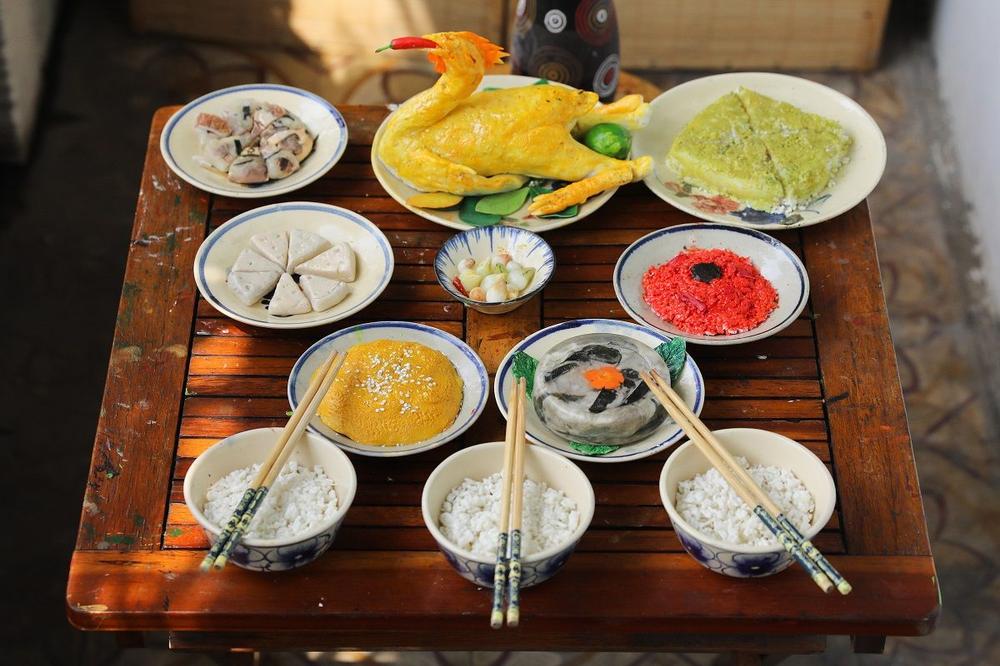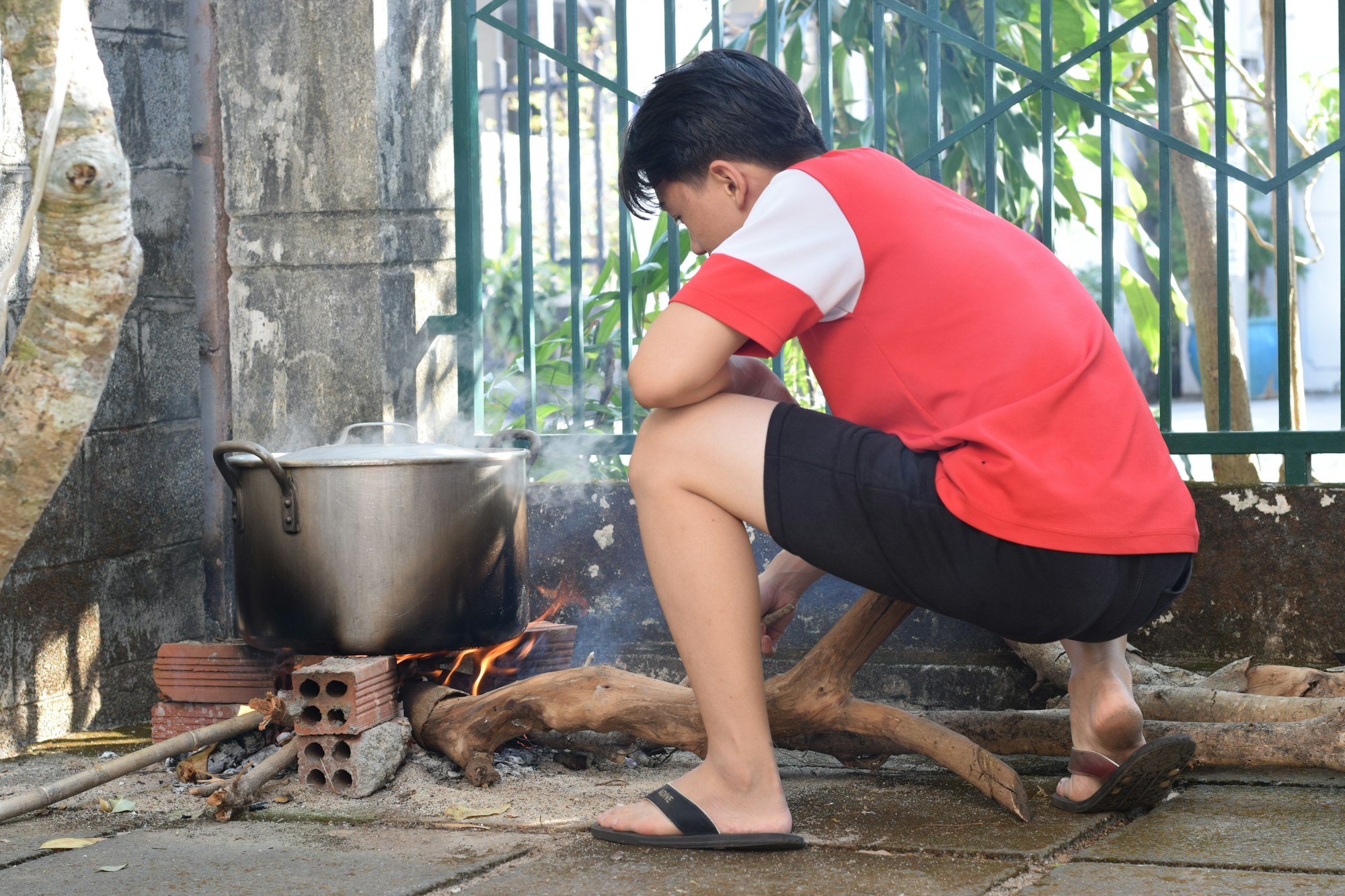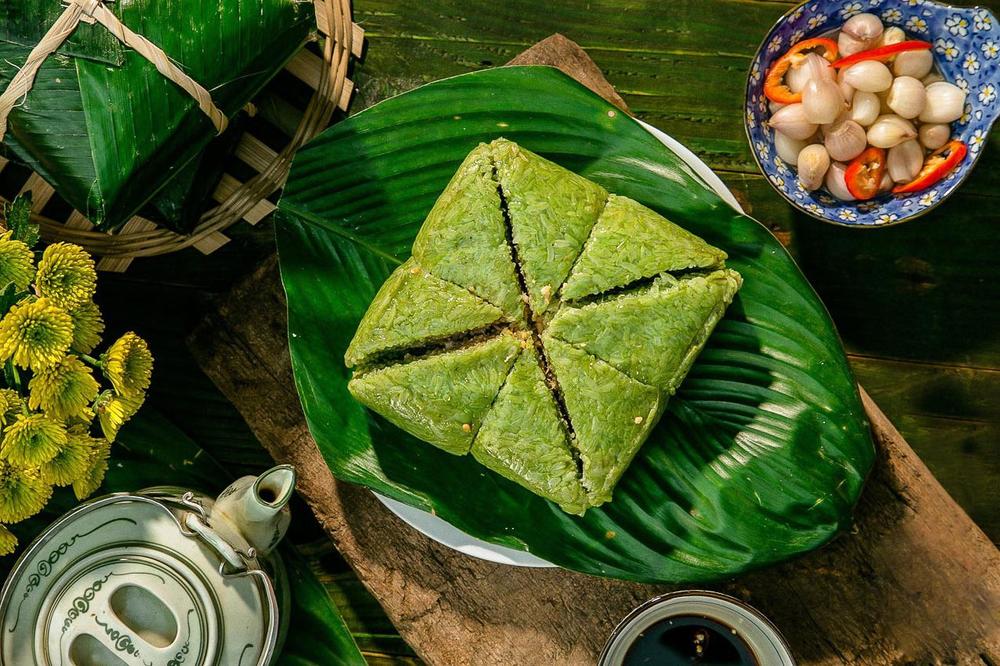A guide to Vietnamese Tet food (Northern)

Tết Nguyên Đán or simply Tet (Vietnamese Lunar New Year) is the most festive time of year in Vietnam as well as the busiest due to the amount of preparation required. You can quickly get a sense of Tet's intense yet joyful atmosphere just by watching streets crowded with a continuous stream of people busy with shopping and preparing in advance for Tet. On this particular occasion, everything must be prepared carefully and early.
To get ready for the holiday following Vietnamese belief, you should clean your home, replace your outdated things with new ones, and—because you're to stop all work during Tet, including household work—cook all the food you'll eat during the holiday.
Certain dishes like bánh chưng (square meat cake) are like unofficial Tet mascots for their close association with the holiday. If you're in Hanoi or somewhere else in the North, expect to see typical dishes from that region there like xôi gấc (sticky rice) during this time of year.
In this series, we're going to explore the food traditions of Vietnam's three major regions—the North, Middle, and South—going from top to bottom.
Northern Vietnam's traditional meal
A complete meal there calls for preparing many foods and a sophisticated presentation. Traditionally, the full Northern Tet meal needs eight dishes—four bowls and four plates—representing four pillars, seasons, and directions.
The traditional Hanoian family's meal has been simplified compared to the number of recipes in the past. Nevertheless, there are still some irreplaceable dishes that almost every Northern family will prepare on this special occasion.

Bánh Chưng (Chưng cakes or Vietnamese square cakes)
This is the most well-known cake of the holiday, arguably the most famous Tet dish of them all. Bánh chưng (Vietnamese square cake) is made from glutinous rice, mung beans, pork, and other ingredients, which are believed to express the essence of the heaven and the earth through the skillful hands of humans, according to Vietnam's legendary ancient chief King Hùng Vương. By this belief, making bánh chưng cake is also the ideal way to express gratitude to our ancestors and homeland. It embodies the spirit of the Vietnamese Lunar New Year.

Vietnamese families love to pack and boil bánh chưng cake together as a household around one week before giao thừa (New Year's Eve). It is also a great chance for family members to gather and spend the night together, sharing neverending stories, games, and conversations while waiting for the cakes to be boiled.
Xôi gấc - Red Sticky Rice
Xôi (Sticky rice) is also an indispensable part of the traditional Northern meal. There's a selection of different xôi: xôi lạc (sticky rice with peanuts), xôi đậu xanh (sticky rice with mung bean), and my personal favorite xôi gấc (sticky rice with special gấc fruit). Among these types, xôi gấc is in my opinion the best choice thanks to its distinct red color, which signifies a good fortune, according to Vietnamese belief.
Generally, xôi gấc is usually served with giò chả (Vietnamese sausage) or boiled chicken in Tet meals. Sometimes it can be served with chè (sweet soup) like a dessert dish. Xôi gấc is a great start for the new year because this dish is believed to bring lots of luck and symbolize good things.
Dưa hành– Pickled Onions
Freshly pickled onions are often served as a side dish alongside bánh chưng cake or high protein dishes to reduce the greasiness. However, foreigners may find this dish, in a word, unfriendly as they often can not handle the alliaceous, intensely oniony smell.
But once you get along with these sweet-but-sour, slightly spicy pickled onions, you just can't resist them. It helps elevate the flavor of Tet dishes and benefit our body's digestive processes.
First thing's first: to make standard pickled onions, you need to choose old ones with firm bulbs. Next, soak the onions in water mixed with borax and ash for two days and two nights. After that, take out the onions, cut off the roots, peel them, put them into a large jar, cover them with salt, and put a thin layer of the chopped cane on top. Finally, cover the onions with layers of bamboo. After two weeks, you can get the onion bulbs out, soak them in sugar and vinegar. In three days, your pickled onions will be ready to rock.
Giò Chả, Giò Thủ – Vietnamese sausage, Pork Head Ham
Regardless of regional geography, the Vietnamese Tet feast must contain a dish of giò (Vietnamese sausage), one of the most savory of all Lunar New Year dishes.
Vietnamese sausage (Giò), usually made of pork, is finely milled in a stone mortar and wrapped in banana leaves to form a tube shape. It is then boiled or steamed. There's also giò bò (beef sausage) made from finely milled beef, a specialty of central Vietnam. A well-cut piece of giò must look neat, friendly, and easy to pick up. The plating and presentation of this dish depends on the cooks' creativity.
Then you have giò thủ (pork head ham), a Vietnamese sausage made from the meat of a pig's head. For making giò thủ, pig's ears and head meat are not milled but diced and mixed with other ingredients like a wood ear (black mushroom), fish sauce, pepper, and garlic, all of which are stir-fried. They are first fried in a pan and then stirred well on low heat. Then, wrap the pies in fresh banana leaves, tie them carefully, and boil or steam them just like how we did with giò chả. Every bite, a well-cooked giò thủ dish gets its marble texture with the crunchy cartilage. This chewy, meaty, crunchy dish endowed with a profound, spicy, strong favor of condiments and garlic is best paired with pickled onions and a cold glass of bia hơi (fresh Vietnamese beer).
Thịt đông – Frozen Meat
Thịt đông is a dish particular to the winter-spring period of Northern Vietnam when the outside temperature is drastically cooler. Thịt đông is made from mixed protein, sometimes from the chicken as well as pork and pork skin. After the ingredients are cooked in a pot, they may be left to cool down inside the pot or divided into small bowls, depending on your preferred serving size. Then it is covered and chilled in the open air to make what you'd agree is one fabulous dish.
The complete thịt đông dish has a thin white layer of fat on top and a smooth jelly-like layer of frozen meat underneath. A piece of frozen beef served with pickled onions and a hot rice bowl makes the authentic Northern Tet flavor. Frozen meat is typically done with a hot, fragrant rice bowl as the heat of well-cooked rice melts down the frozen fat and soup. All harmonize into one perfect taste.